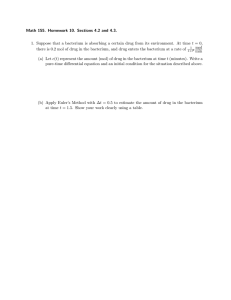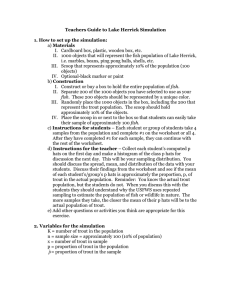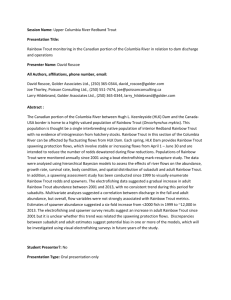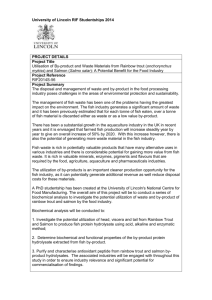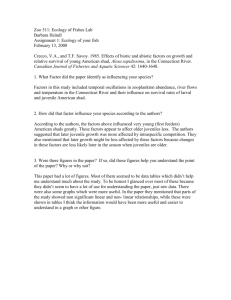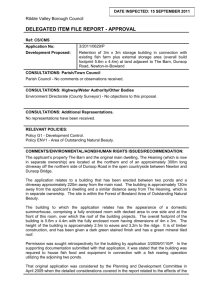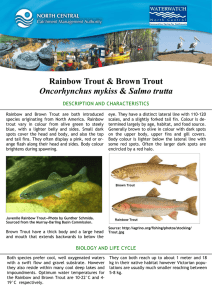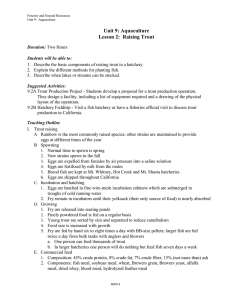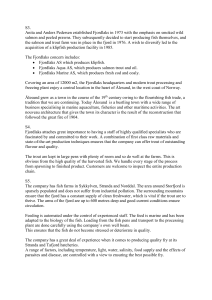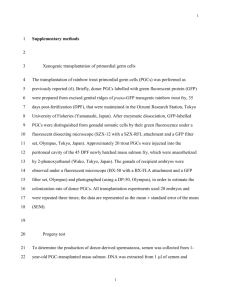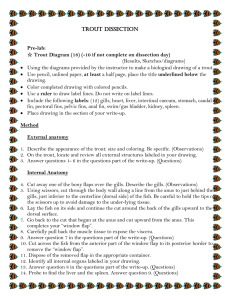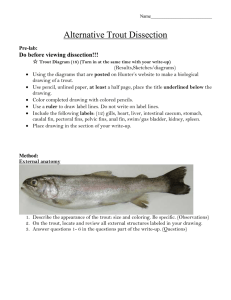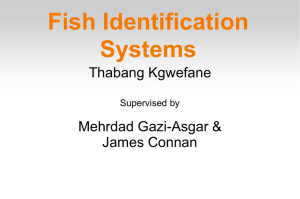Natural and Experimental Infections with Flavobacterium
advertisement
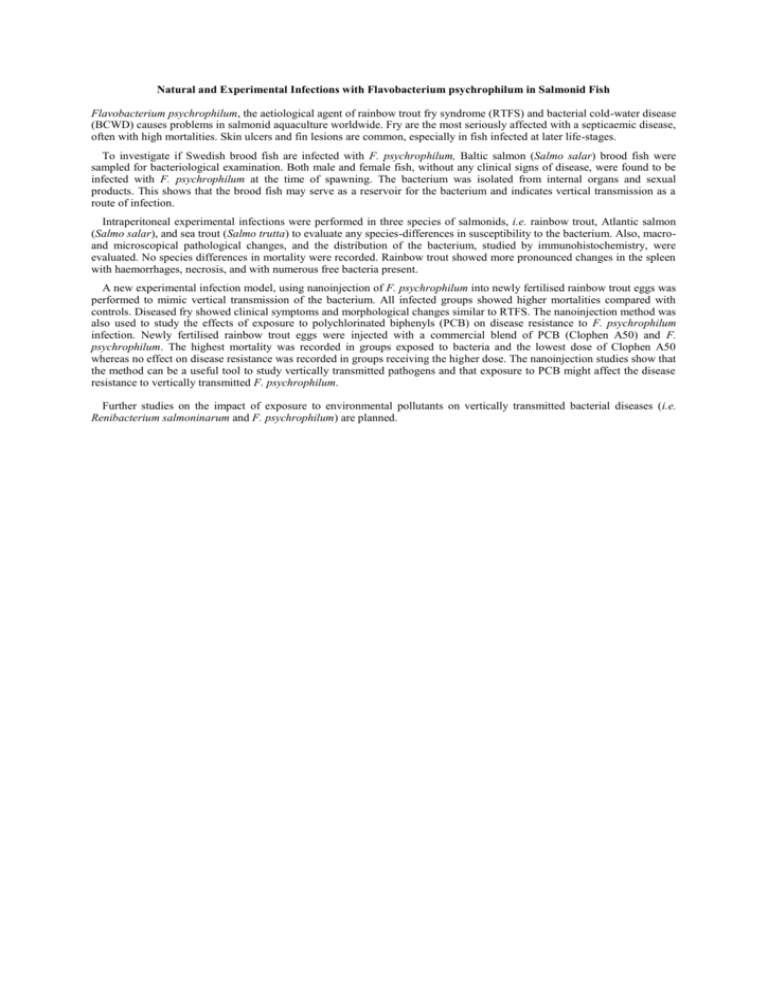
Natural and Experimental Infections with Flavobacterium psychrophilum in Salmonid Fish Flavobacterium psychrophilum, the aetiological agent of rainbow trout fry syndrome (RTFS) and bacterial cold-water disease (BCWD) causes problems in salmonid aquaculture worldwide. Fry are the most seriously affected with a septicaemic disease, often with high mortalities. Skin ulcers and fin lesions are common, especially in fish infected at later life-stages. To investigate if Swedish brood fish are infected with F. psychrophilum, Baltic salmon (Salmo salar) brood fish were sampled for bacteriological examination. Both male and female fish, without any clinical signs of disease, were found to be infected with F. psychrophilum at the time of spawning. The bacterium was isolated from internal organs and sexual products. This shows that the brood fish may serve as a reservoir for the bacterium and indicates vertical transmission as a route of infection. Intraperitoneal experimental infections were performed in three species of salmonids, i.e. rainbow trout, Atlantic salmon (Salmo salar), and sea trout (Salmo trutta) to evaluate any species-differences in susceptibility to the bacterium. Also, macroand microscopical pathological changes, and the distribution of the bacterium, studied by immunohistochemistry, were evaluated. No species differences in mortality were recorded. Rainbow trout showed more pronounced changes in the spleen with haemorrhages, necrosis, and with numerous free bacteria present. A new experimental infection model, using nanoinjection of F. psychrophilum into newly fertilised rainbow trout eggs was performed to mimic vertical transmission of the bacterium. All infected groups showed higher mortalities compared with controls. Diseased fry showed clinical symptoms and morphological changes similar to RTFS. The nanoinjection method was also used to study the effects of exposure to polychlorinated biphenyls (PCB) on disease resistance to F. psychrophilum infection. Newly fertilised rainbow trout eggs were injected with a commercial blend of PCB (Clophen A50) and F. psychrophilum. The highest mortality was recorded in groups exposed to bacteria and the lowest dose of Clophen A50 whereas no effect on disease resistance was recorded in groups receiving the higher dose. The nanoinjection studies show that the method can be a useful tool to study vertically transmitted pathogens and that exposure to PCB might affect the disease resistance to vertically transmitted F. psychrophilum. Further studies on the impact of exposure to environmental pollutants on vertically transmitted bacterial diseases (i.e. Renibacterium salmoninarum and F. psychrophilum) are planned.



